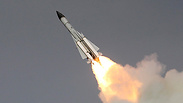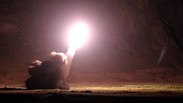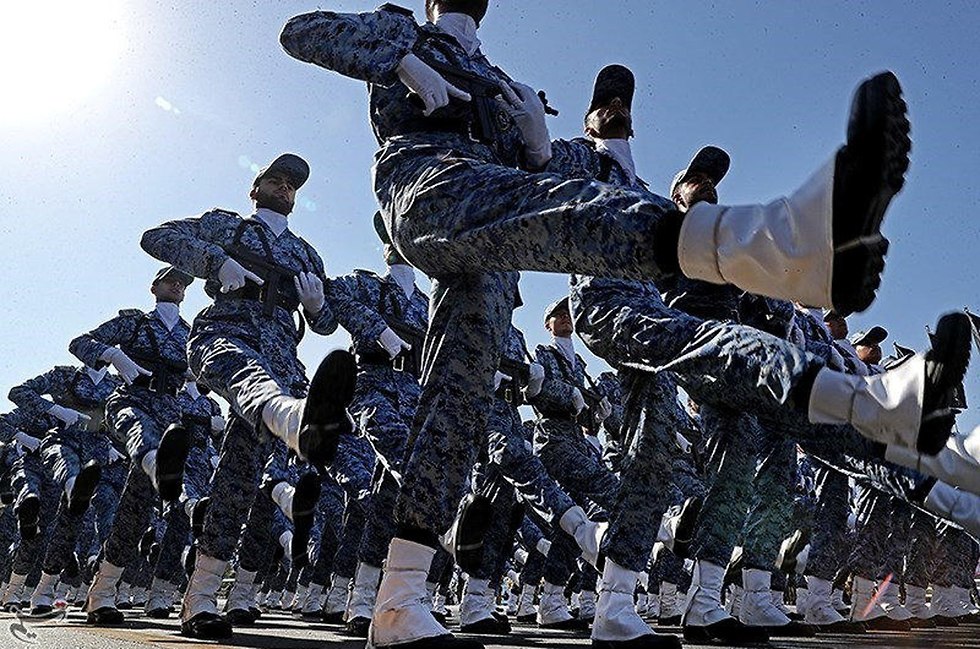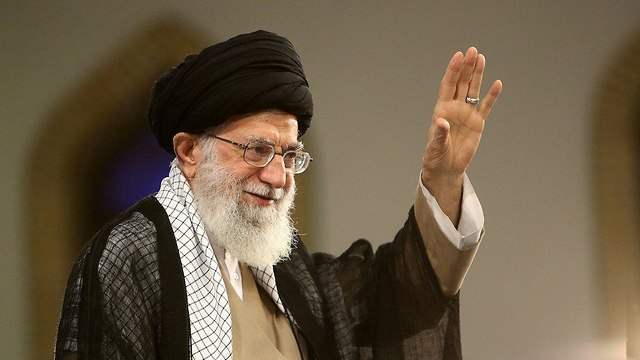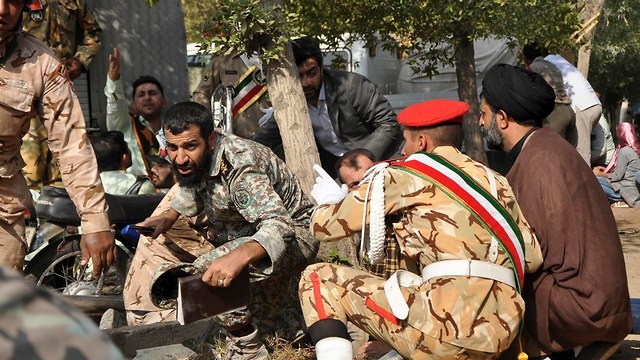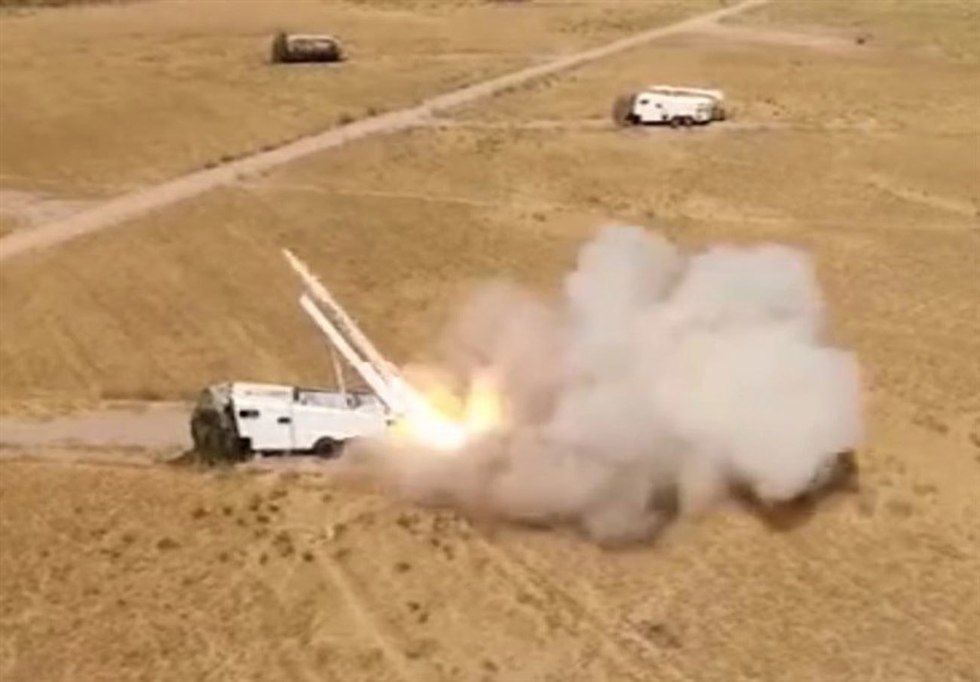Iran's Revolutionary Guards said Monday that they had launched at least six ballistic missiles into eastern Syria, targeting those responsible for the recent attack on a military parade in Iran, in order to "convey a clear message to Saudi Arabia, the US and Israel," according to the Hezbollah-affiliated Al Mayadeen news channel.
One missile shown on state television bore the slogans "Death to America, Death to Israel, Death to Al Saud," referring to Saudi Arabia's ruling family. The missile also bore in Arabic the phrase "kill the friends of Satan," referring to a verse in the Quran on fighting infidels.
Mohsen Rezaie, a former commander of the Guards, suggested in a Twitter message on Monday that more attacks were coming. "The main punishment is on the way," he wrote.
In announcing the attack, Iranian state media said the missiles targeted both "takfiri" militants—a term it often applies to the Islamic State group (IS)—and Ahvazi separatists. The separatists have not been known to work with the IS in the past.
The launch was Iran's second such missile attack on Syria in over a year.
"This is the roaring of missiles belonging to the Revolutionary Guards of the Islamic Revolution. In a few minutes, the world of arrogance—especially America, the Zionist regime and the Al Saud—will hear the sound of Iran's repeated blows," the state TV's reporter said as the missiles launched behind him.
The Revolutionary Guards' statement said that based on evidence from the Ahvaz attack, the terrorists in eastern Syria are supported and guided by the United States in line with "satanic" plans of the White House, the Zionist regime—Iranian parlance for Israel—and a regional power, a reference to Saudi Arabia.
The statement added that the Guards are prepared for any further steps by Iran's enemies.
"Our iron fist is prepared to deliver a decisive and crushing response to any wickedness and mischief of the enemies," the Guards, the most powerful military force in the Islamic Republic, said in their statement.
State television and the state-run IRNA news agency said the attacks "killed and wounded" militants in Syria, without elaborating. Syrian state media did not immediately acknowledge the strike.
State TV aired footage of one of its reporters standing by as one of the missiles launched, identifying the area as being in Iran's western province of Kermanshah. It also-aired graphic suggesting the missiles flew over central Iraq near the city of Tikrit before landing near the city of Abu Kamal, in the far southeast of Syria.
Abu Kamal is held by forces loyal to Syria's embattled President Bashar Assad. However, the city has been targeted even now by terrorists from the extremist IS who have lost almost all the territory they once held in Syria and Iraq.
The semi-official Fars news agency, believed to be close to the Revolutionary Guards, identified the six missiles used as Zolfaghar and Qiam variants, which have ranges of 750 kilometers (465 miles) and 800 kilometers (500 miles) respectively.
Seven drones were also used to bomb militant targets during the attack, state TV reported.
The attack adds to confusion over who carried out an assault on a military parade in Ahvaz on Sept. 22 that killed 29 people and wounded over 60.
Iranian officials have also blamed Gulf states and the United States for the attack in which gunmen disguised as soldiers opened fire on the crowd and officials watching the parade in the southwestern city.
Top Iranian officials, including Iranian Supreme Leader Ayatollah Ali Khamenei, accused Iran's adversaries the United States and Gulf states of provoking the bloodshed and backing the Arab separatist 'al-Ahvaziya' armed group.
Arab separatists immediately claimed the attack and offered details about one of the attackers that ultimately turned out to be true.
Yacoub Hor al-Tostari, a spokesman for the Arab Struggle Movement for the Liberation of Ahvaz, told The Associated Press that members of his organization carried out the attack because his group wants that area of southwest Iran to be its own nation.
He described his group as leading an umbrella organization for other Ahvaz groups, which includes the militants who carried out the attack in Ahvaz.
IS also claimed responsibility for the assault, but initially made factual incorrect claims about it.
Later, IS released footage of several men that Iran ultimately identified as attackers, though the men in the footage never pledged allegiance to the extremist group.
This is the third time in recent months that Iran has fired its ballistic missiles in anger.
Last year, Iran fired ballistic missiles into Syria over a bloody IS attack on Tehran targeting parliament and the shrine of Ayatollah Ruhollah Khomeini.
In September, Iran fired missiles into Iraq targeting a base of an Iranian Kurdish separatist group. The separatists say that strike killed at least 11 people and wounded 50.
In recent years, Iran and Iraq have been fighting against IS. Teheran has been transferring military aid to Baghdad to bolster its operations against the terror group.
The Kurds represent about 10 percent of Iran's population of 80 million people, with many living in the mountainous northwest that borders Iraq and Turkey.
